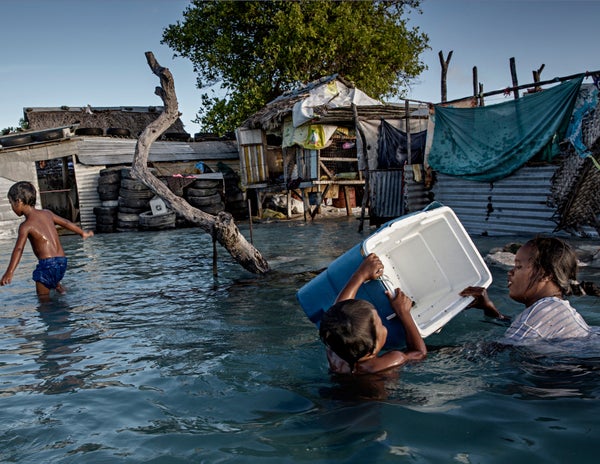This article was published in Scientific American’s former blog network and reflects the views of the author, not necessarily those of Scientific American
I was nine when I first saw the numbers: 176924 inked unforgivingly into my grandfather's skin.
As the grandchild of Auschwitz concentration camp survivors, I did not grow up hearing blissful stories of their youth. My family’s history is filled with cattle cars in Germany, refugee camps in France and anti-Semitism in America. And yet, in the face of genocide, displacement and forced migration, my family’s traditions have proven resilient.
Thousands of miles from where my grandparents were born and two generations from the extermination of nearly every branch of my family tree, my life is still cradled by their heritage. I light Shabbat candles each Friday night in gratitude for good times and can confidently fall back on the social safety net of my Jewish community in times of trouble.
On supporting science journalism
If you're enjoying this article, consider supporting our award-winning journalism by subscribing. By purchasing a subscription you are helping to ensure the future of impactful stories about the discoveries and ideas shaping our world today.
I am able to rely on this identity because their cultural heritage was preserved and empowered at every step of their exodus.
My grandparents’ history was documented in the USC Shoah Foundation’s Visual History Archive, a repository of Holocaust testimony. Their heritage of foodways, faith and music was uplifted and used as a bridge to build relationships with other immigrant communities in New York City. And synagogues across America offered a physical space to retain, practice and foster our traditions.
That documentation of, bridge building between, and physical space for cultural heritage was key to my community’s resilience to the local migrations we have experienced in our new home over the past 60 years. From the dispersion of Jews across metropolitan suburbs to our displacement by Hurricane Sandy, we have been able to move, build and bounce back together.
Today I work with and research communities facing climate-induced displacement and migration in the U.S. and U.S. territories. In partnership with the National Trust for Historic Preservation, my organization, the Artic Institute, is connecting local leaders across the country with skills-based volunteers to complete climate adaptation projects, filling the gaps left by the Trump administration’s inaction and ignorance.
Sea level rise, wildfires and extreme weather events are already causing the displacement and resettlement of communities on every continent. As families face the physical, mental and spiritual health challenges of dislocation and seek new homes on safer ground, they are often forced to leave culturally important places, landscapes, traditions and histories behind.
When I compare my story to those of my colleagues experiencing climate-induced displacement in the Arctic and along the Gulf Coast, I notice a gap. Investment in cultural heritage—the keystone of my family’s resilience—is absent from climate policies.
That cultural deficiency in our support for climate change migrants is dangerous.
Damage to cultural heritage that comes from severing a community’s attachment to a place is demoralizing in the short-term and hinders long-term recovery and resilience. Severing social ties, dislocating local knowledge on how to absorb shocks, and weakening cultural practices like food, faith and music—practices that could be vital in building friendships in new hometowns if they were preserved—all erode the adaptability of individuals and social safety net of communities.
To support resilient migration for America’s climate-affected communities, climate change policies must allocate resources for the documentation, support and physical housing of cultural heritage at every step of the migration process.
Green New Deal initiatives like those adopted by Los Angeles and New York are one straightforward entry point to include resources for cultural heritage preservation and empowerment. Policymakers can easily incorporate support mechanisms like grants for documentation of heritage lost to climate impacts. They can also ensure that climate-displaced new arrivals in their cities have access to physical spaces to share and practice traditions.
In 2017, hundreds of families displaced by Hurricanes Harvey, Maria and Irma chose to move to nearby cities. In 2018, the California wildfires proved that climate migration comes not only from swamped coastlines, but also from inland impacts we can no longer avoid.
To document, safeguard and uplift the cultural heritage of climate migrants is perhaps our best bet to build resilience to these impacts. When the next large-scale extreme storm or fire hits as early as this hurricane season, Americans will again be forced to move. The need to ground climate policies in culture gains urgency with each passing disaster cycle.
On May 2, 2019, the people, communities and cultures lost during the Holocaust were commemorated for the 74th time. I spent Holocaust Remembrance Day listening to the stories of genocide survivors and their direct decedents at a local event in Washington, D.C. This passing down histories from one generation to the next—the preservation of our heritage so that others can rely on its foundation—is known in Hebrew as L’dor va’Dor.
In a word, it means resilience.
